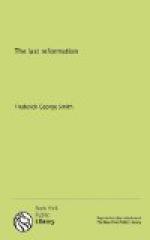According to these definitions, the main idea of a symbol is the representation of an object or quality, not by exhibition of itself, but by another object or character analogous to it. Nor are we limited in the use of symbols to the exhibition of moral subjects alone. Any object may be symbolized, provided a corresponding object can be found.
[Sidenote: Analogy the basic law]
Analogy, then, is the fundamental law of symbols. This being true, it is clear that symbols must be definitely applied. They are not arbitrary. There is no reason why we could not call a book a table, and a table it would be, provided we agreed universally to adopt that designation; but we violate nature if we attempt to represent the quiet, peaceful, gentle disposition of a child by a lion or a tiger, or a cruel, vindictive, tyrannical disposition by a lamb. A polluted harlot may represent an apostate church, but not the true church. A proper correspondence of character and quality must be observed. We must follow nature strictly. And this is the law of symbols.
Symbols are drawn from different departments—from angelic life, human life, animal life, and inanimate creation. But in every case there is in the selection and use of the symbol a proper correspondence of character and quality.
[Sidenote: Twofold object of symbols]
The deciding factor in the original selection of a symbolic object is the nature of the thing to be symbolized. In the field of Bible prophecy the general design is in the main twofold—the representation (1) of the affairs of the church and (2) of the political history of those nations and kingdoms which were to exert an important influence on the life and development of the church. It is evident that in the divine estimation the church and its welfare is of infinitely greater importance than the affairs of nations and kingdoms. Therefore we may reasonably expect that, according to the nature of symbolic language, symbols designed to represent the church will be found to be of the most exalted type, whereas those representing political things will be found to be selected from an inferior department. In accordance with this fundamental classification we shall find that symbols drawn from angelic life and human life invariably refer to the department of ecclesiastical affairs, while those drawn from animal life or inanimate nature represent political things. The only apparent exception to this rule is that certain inanimate objects formerly consecrated to the service of God and thus associated with the department of the church are sometimes used to represent spiritual things, because the analogy is obvious. Bearing in mind this fundamental distinction between the representation of things political and things ecclesiastical, we are prepared to understand other shades of distinction.




